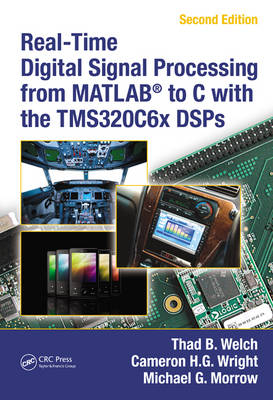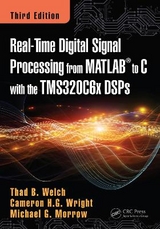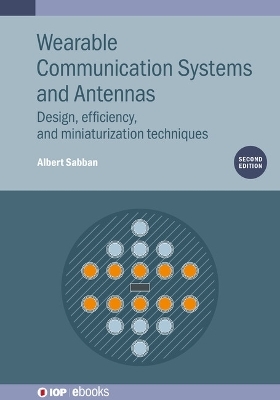
Real-Time Digital Signal Processing from MATLAB® to C with the TMS320C6x DSPs, Second Edition
Crc Press Inc (Verlag)
978-1-4398-8303-7 (ISBN)
- Titel erscheint in neuer Auflage
- Artikel merken
"…There are many good textbooks today to teach digital signal processing, but most of them are content to teach the theory, and perhaps some MATLAB® simulations. This book has taken a bold step forward. It not only presents the theory, it reinforces it with simulations, and then it shows us how to actually use the results in real-time applications. This last step is not a trivial step, and that is why so many books, and courses, present only theory and simulations. With the combined expertise of the three authors of this text…the reader can step into the real-time world of applications with a text that presents an accessible path…"
—Delores M. Etter, Texas Instruments Distinguished Chair in Electrical Engineering and Executive Director, Caruth Institute for Engineering Education, Southern Methodist University, Dallas, Texas, USA
Mastering practical application of real-time digital signal processing (DSP) remains one of the most challenging and time-consuming pursuits in the field. It is even more difficult without a resource to bridge the gap between theory and practice.
Filling that void, Real-Time Digital Signal Processing from MATLAB® to C with the TMS320C6x DSPs, Second Edition is organized in three sections that cover enduring fundamentals and present practical projects and invaluable appendices. This updated edition gives readers hands-on experience in real-time DSP using a practical, step-by-step framework that also incorporates demonstrations, exercises, and problems, coupled with brief overviews of applicable theory and MATLAB® application.
Engineers, educators, and students rely on this book for precise, simplified instruction on use of real-time DSP applications. The book’s software supports the latest high-performance hardware, including the powerful, inexpensive, and versatile OMAP-L138 Experimenter Kit and other development boards.
Incorporating readers’ valuable feedback and suggestions, this installment covers additional topics (such as PN sequences) and more advanced real-time DSP projects (including higher-order digital communications projects), making it even more valuable as a learning tool.
Section I: Enduring Fundamentals
Introduction and Organization
Why Do You Need This Book?
Real-Time DSP
How to Use This Book
Get Started
Sampling and Reconstruction
Theory
winDSK Demonstration
Talk-Through Using Windows
Talk-Through Using MATLAB and Windows
DSK Implementation in C
FIR Digital Filters
Theory
winDSK Demonstration
MATLAB Implementation
DSK Implementation in C
IIR Digital Filters
Theory
winDSK Demonstration: Notch Filter Application
MATLAB Implementation
DSK Implementation in C
Periodic Signal Generation
Theory
winDSK Demonstration
MATLAB Implementation
DSK Implementation in C
Pseudonoise Sequences
Frame-Based DSP
Theory
winDSK Demonstration
MATLAB Implementation
DSK Implementation in C
Summary of Frame-Based Processing
Digital Filters Using Frames
Theory
winDSK Demonstration
MATLAB Implementation
DSK Implementation in C
The Fast Fourier Transform
Theory
winDSK Demonstration
MATLAB Implementation
Implementation in C
Spectral Analysis and Windowing
Theory
winDSK Demonstration
MATLAB Implementation
DSK Implementation in C
Conclusion
Section II: Projects
Project 1: Guitar Special Effects
Introduction to Projects
Theory
winDSK Demonstration
MATLAB Implementation
DSK Implementation in C
Project 2: Graphic Equalizer
Theory
winDSK Demonstration
MATLAB Implementation
DSK Implementation in C
Project 3: Peak Program Meter
Theory
winDSK Demonstration: commDSK
MATLAB Implementation
DSK Implementation in C
Project 4: AM Transmitters
Theory
winDSK Demonstration
MATLAB Implementation
DSK Implementation in C
Project 5: AM Receivers
Theory
winDSK Demonstration
MATLAB Implementation
DSK Implementation in C
Project 6: Phase-Locked Loop
Theory
winDSK Demonstration
MATLAB Implementation
DSK Implementation in C
Project 7: BPSK Digital Transmitters
Theory
winDSK Demonstration
MATLAB Implementation
DSK Implementation in C
Project 8: BPSK Digital Receivers
Theory
winDSK Demonstration
MATLAB Implementation
DSK Implementation in C
Project 9: MPSK and QAM Digital Transmitters
Theory
winDSK Demonstration
MATLAB Implementation
DSK Implementation in C
Higher-Order Modulation Schemes
Project 10: QPSK Digital Receivers
Theory
winDSK8 Demonstration
MATLAB Implementation
DSK Implementation in C
Follow-On Challenges
Section III: Appendices
Code Composer Studio: An Overview
Introduction
Starting Code Composer Studio
Conclusion
DSP/BIOS
Introduction
DSP/BIOS Sample Projects
Numeric Representations
Endianness
Integer Representations
Integer Division and Rounding
Floating-Point Representations
Fixed-Point Representations
Summary of Numeric Representations
TMS320C6x Architecture
Computer Architecture Basics
TMS320C671x Architecture
TMS320C674x Architecture
Related Tools for DSKs
Introduction
Windows Control Applications
MATLAB Exports
MATLAB Real-Time Interface
Programming Perils and Pitfalls
Debug versus Release Builds
The Volatile Keyword
Function Prototypes and Return Types
Arithmetic Issues
Controlling the Location of Variables in Memory
Real-Time Schedule Failures
Variable Initialization
Integer Data Sizes
Abbreviations, Acronyms, and Symbols
References
Index
| Zusatzinfo | 200+; 6 Tables, black and white; 229 Illustrations, black and white |
|---|---|
| Verlagsort | Bosa Roca |
| Sprache | englisch |
| Maße | 178 x 254 mm |
| Gewicht | 956 g |
| Themenwelt | Technik ► Nachrichtentechnik |
| ISBN-10 | 1-4398-8303-3 / 1439883033 |
| ISBN-13 | 978-1-4398-8303-7 / 9781439883037 |
| Zustand | Neuware |
| Informationen gemäß Produktsicherheitsverordnung (GPSR) | |
| Haben Sie eine Frage zum Produkt? |
aus dem Bereich



